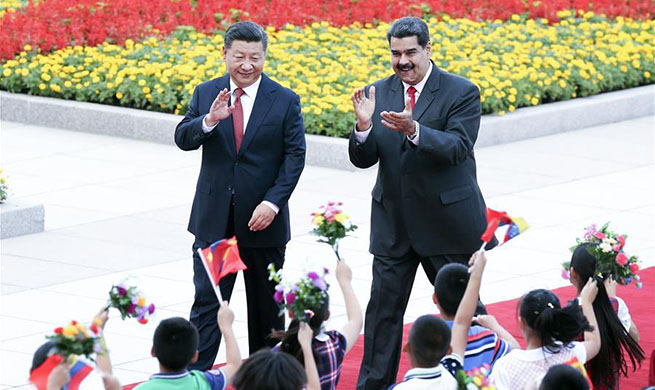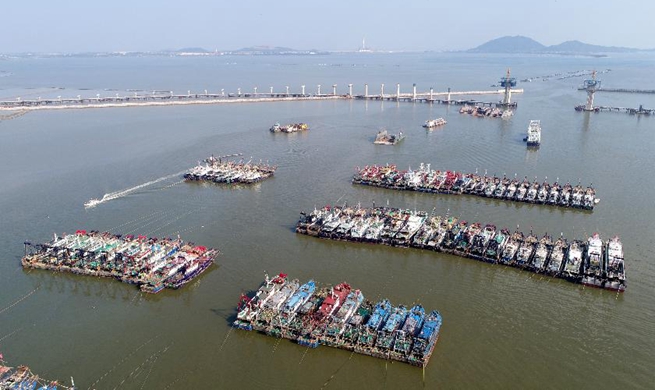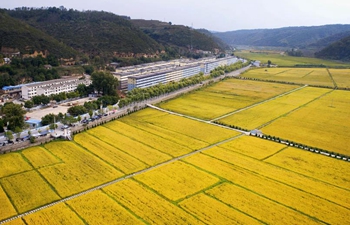By Eric J. Lyman
ROME, Sept. 15 (Xinhua) -- Recent economic indicators have painted a mixed picture of the health of the Italian economy, but analysts said it would not take much for jittery investors to turn sour on the country's economic prospects.
The next big milestone on Italy's economic calendar surround the process for the country's 2019 budget plan, which will get underway starting in about a month.
In the meantime, economic indicators continue to trickle out.
On Friday, the country's National Statistics Institute, or ISTAT, reported that inflation for August checked in at 1.6 percent, slightly lower than forecast and higher than a year ago. Often, economists look at rising prices as an indication of rising demand for products.
Over the last two weeks, Italy has had weaker-than-expected economic growth and a downward tick on consumer confidence. Weak industrial production figures have cast doubt on growth prospects going forward. Unemployment levels rose slightly in the last quarter, with extra weakness among young workers.
At the same time, however, the export sector remained strong and the national debt was mostly unchanged, assuaging the concerns of investors fearing ambitious government spending plans would swell the government deficit.
And Fitch, the United States-based ratings agency, kept the same investment-grade rating for Italian government bonds, though it did lower its long-term outlook for the country.
"The indicators have been a mixed bag," Javier Noriega, chief economist with Hildebrandt and Ferrar, told Xinhua. "Investors remain a little nervous about what the new government will do, but so far we haven't seen anything that will make them run. But it wouldn't take a lot to make that happen."
Noriega was referring to the government of Prime Minister Giuseppe Conte, which was installed June 1.
Some parts of the platforms from the two parties supporting the Conte government -- the anti-establishment and populist Five-Star Movement and the anti-migrant and far-right League -- are in contrast.
The Five-Star Movement, for example, favors establishing a basic national income for all Italians, while the League wants to establish a flat tax economists say will lower government tax revenue. The combination of both policies at the same time would almost certainly swell government debt.
One steadying influence on markets has been the steady hand of Giovanni Tria, the minister of finance. Tria is one of the few members of Conte's cabinet who is not a member of either of the political parties backing the government, and he has vowed that whatever policies are adopted in the 2019 budget they would still allow for the government to reduce debt.
"Tria is the key," Patrizio Tirelli, an economist with the University of Milano Bicocca, said in an interview. "If the government's decisions reflect what Tria has been saying, then things will probably be OK. But if they decide to ignore Tria and start adding to the debt, then nobody can say what will happen."
Early indicators are that the latter option may be in the works. Earlier this week, Italian media quoted Luigi Di Maio, the minister of labor and the head of the Five-Star Movement, as threatening Tria's job if the universal income is not included in the 2019 budget. Such a measure is estimated to cost around 10 billion euros (11.5 billion U.S. dollars).
"If that happens, it will be a big problem for the government," the media quoted Di Maio as saying. "I respect Tria, but he has to respect the political forces supporting him."
The remark briefly had a negative impact on markets, increasing the yield on Italian debt and sending stocks lower before the party issued a statement saying reports it was pressuring or threatening Tria were "unfounded". After that bond yields and the main stock indexes recovered.













